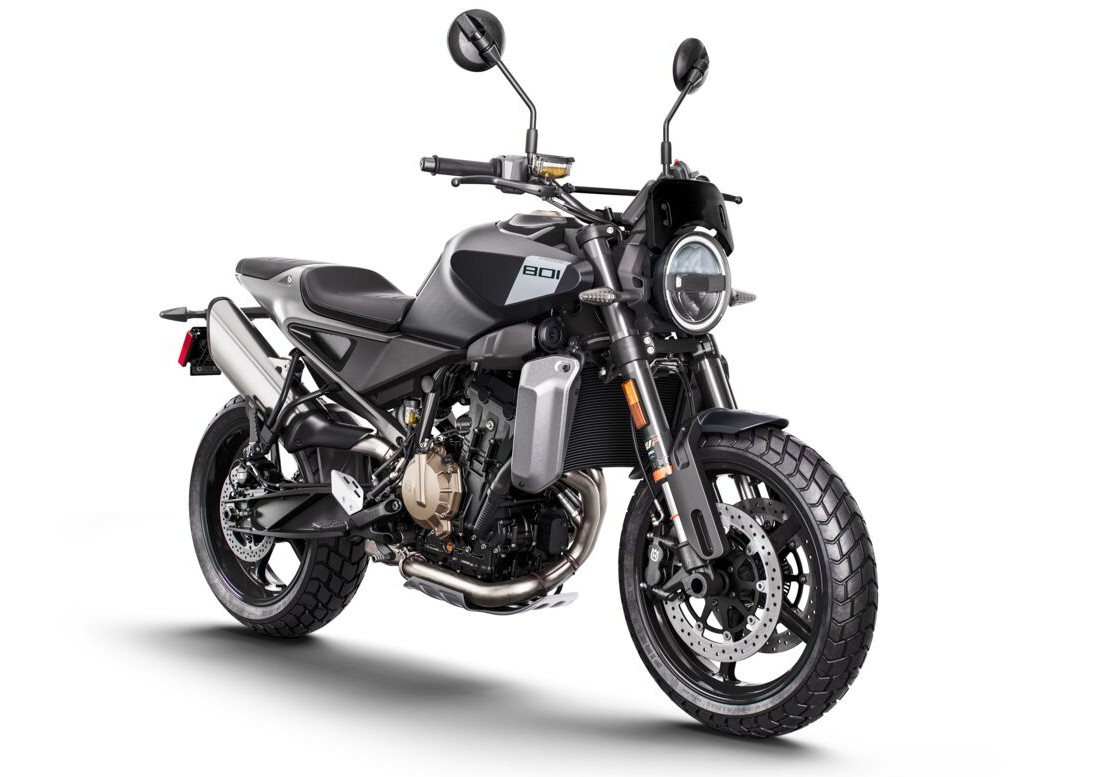
Husqvarna has just announced the Svartpilen 801, a lightweight twin with adjustable suspension and modern electronic aids.
Claimed weight is 399 pounds wet (all fluids, but an empty fuel tank). The fork is fully adjustable for compression and rebound, while the shock has rebound damping adjustment only (together with spring preload adjustment). The bike comes standard with a quickshifter, traction control and corner sensitive ABS brakes.
Traditionalists will love the single round headlight (all lights are LED) and 17″ wheels that allow the fitment of modern sports rubber.
Pricing is TBA, but Husqvarna says bikes will be in dealerships this June. Here is the press information from Husqvarna:
The Svartpilen 801 is an all-new and powerful naked motorcycle from Husqvarna Motorcycles that has been precisely engineered to heighten the riding experience and to set a new standard for street motorcycle production.
With a weight of just 399 lb (181 kg) and powered by a compact, parallel-twin engine, the Svartpilen 801 delivers an outstanding and dynamic power-to-weight ratio. Adjustable WP suspension and a steering damper offer control and comfort for day-long riding while multiple ride modes and an optional Dynamic Pack let riders adapt their machine to their riding style and the conditions.
Cutting-edge electronic aids including Easy Shift for seamless gear changes, adaptive Motorcycle Traction Control (MTC), and Bosch corner sensitive ABS, allow advanced and beginner riders alike to enjoy the best riding experience aboard their Svartpilen 801. The optional Motor Slip Regulation (MSR) and an Anti-Wheelie Mode combine safety features with excitement while the J.Juan brake system delivers exceptional stopping power.
The distinctive, minimalist, and scrambler-inspired design of the Svartpilen 801 is achieved by its unique LED lights, aluminum handlebars, and striking colors. Slimline ergonomic bodywork tightly shrouds the engine and frame to allow full riding movement while the 17” wheels are fitted with Pirelli MT60 RS tires for superior grip and constant feedback from the road.
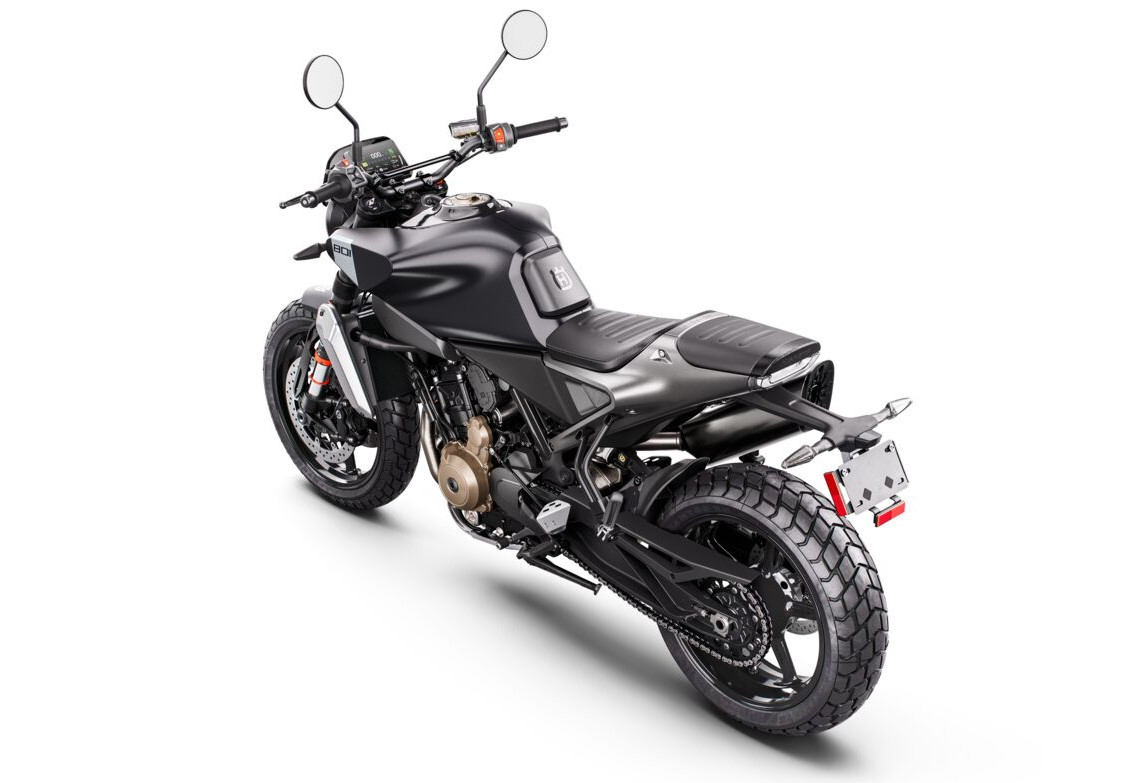
Technical highlights:
- Chromium-molybdenum steel frame with engine as stressed member
- 799 cc parallel-twin engine weighing just 114.6 lb (52 kg) dry
- Adjustable WP APEX suspension provides exceptional comfort and performance on rugged streets
- Four selectable ride modes (Street, Rain, Sport, plus an optional Dynamic Mode)
- Optional Dynamic Pack introduces ten levels of slip adjustment and five levels of Anti Wheelie
- Motor Slip Regulation, Anti-Wheelie, and Cruise Control available with optional Dynamic Pack
- Standard Cornering Motorcycle Traction Control
- Cutting edge, cornering-sensitive ABS
- Ride-by-wire throttle with adjustable throttle response
- Standard Easy Shift function (up and down Quickshifter)
- PASC Slipper clutch
- Standard Connectivity Unit provides TbT+ navigation, telephone calls, and music selection from the rider’s smartphone
- Hazard Warning system with integrated handlebar switch
Chassis
General
One of the most versatile street motorcycles produced, the Svartpilen 801 is balanced and purposeful, offering sporty yet accessible street handling, advanced performance, and dynamic handling together with all-day comfort.
The compact and powerful 799 cc parallel-twin engine is fitted in a lightweight and precisely balanced chassis with high-quality WP APEX suspension. The chromium-molybdenum steel frame uses the engine as a stressed member to provide a low center of gravity, allowing for maximum ground clearance whilst keeping the seat height low. Together, they afford the Svartpilen 801 wide usability while the rugged, minimalist bodywork defines the identity of the machine and underlines its scrambler-inspired roots.
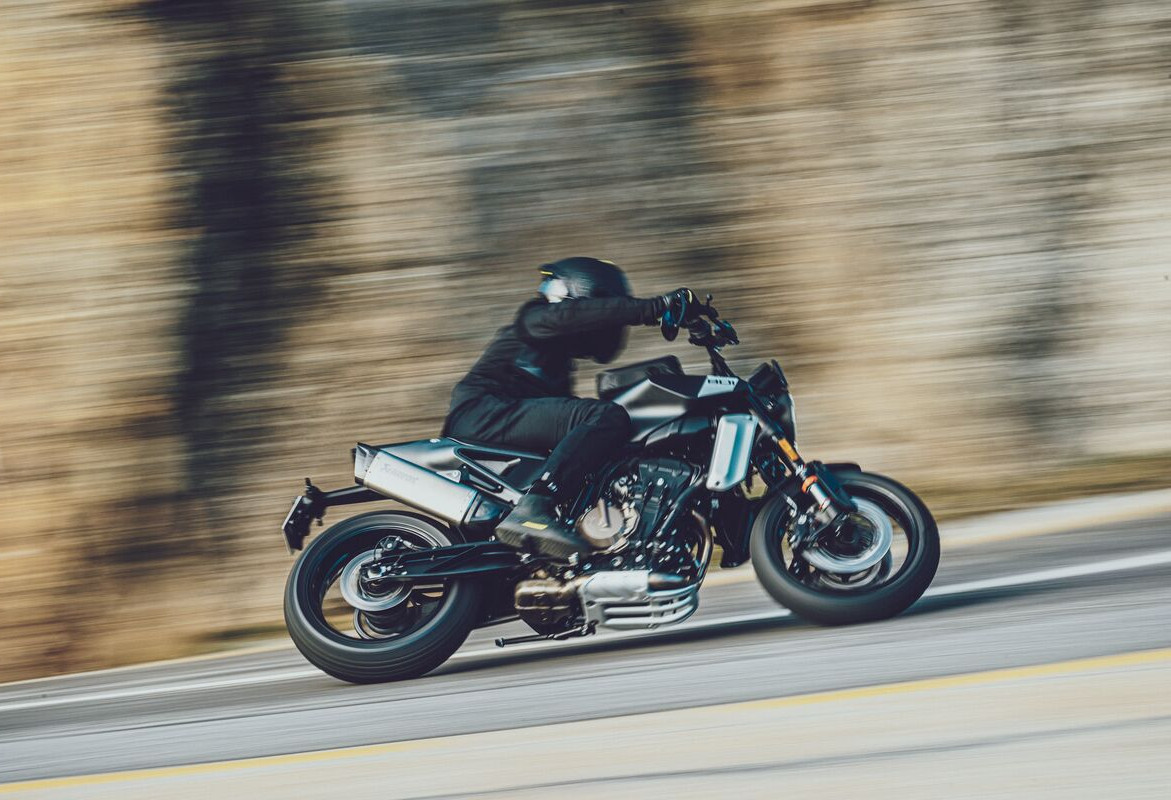
Chromium-molybdenum steel frame
The frame is a tubular chromium-molybdenum steel construction that uses the engine as a stressed member to reduce weight and overall size. The design and engineering of the frame was aimed at providing a compact chassis with reduced weight, but still guaranteed agility and stability. The hydro-formed and laser cut components of the frame are robot-welded together to ensure flawless precision and consistent quality. By using high grade chromium-molybdenum tubular steel, detailed feedback is delivered to the rider through precisely engineered torsional rigidity and longitudinal flex. Additionally, the premium black powder coating guarantees superior protection and a high-quality finish.
The geometry of the Svartpilen 801 was developed to create a world-class street machine. it provides light, sporty handling on the street, but is comfortable over longer distances. The rear shock is angled to reduce the seat height and the rider position is close to the front wheel for improved feel and grip. The compact frame allows for a long swingarm to aid traction.
- Precisely engineered torsional rigidity and longitudinal flex → detailed feedback for maximum rider confidence and comfort
- Lightweight construction → excellent agility and handling
Cast aluminum subframe
The subframe is cast from aluminum with integrated air intakes under the seat. There are no plastic covers or additional brackets with the one-piece design reducing complexity and weight. The airbox sits entirely inside the subframe.
The triangular shapes in the subframe were inspired by the trellis frames of previous street models and allow for a strong and simple construction. The side air intakes combine form and function that creates a wider opening to channel in a larger volume of cool air for maximum performance.
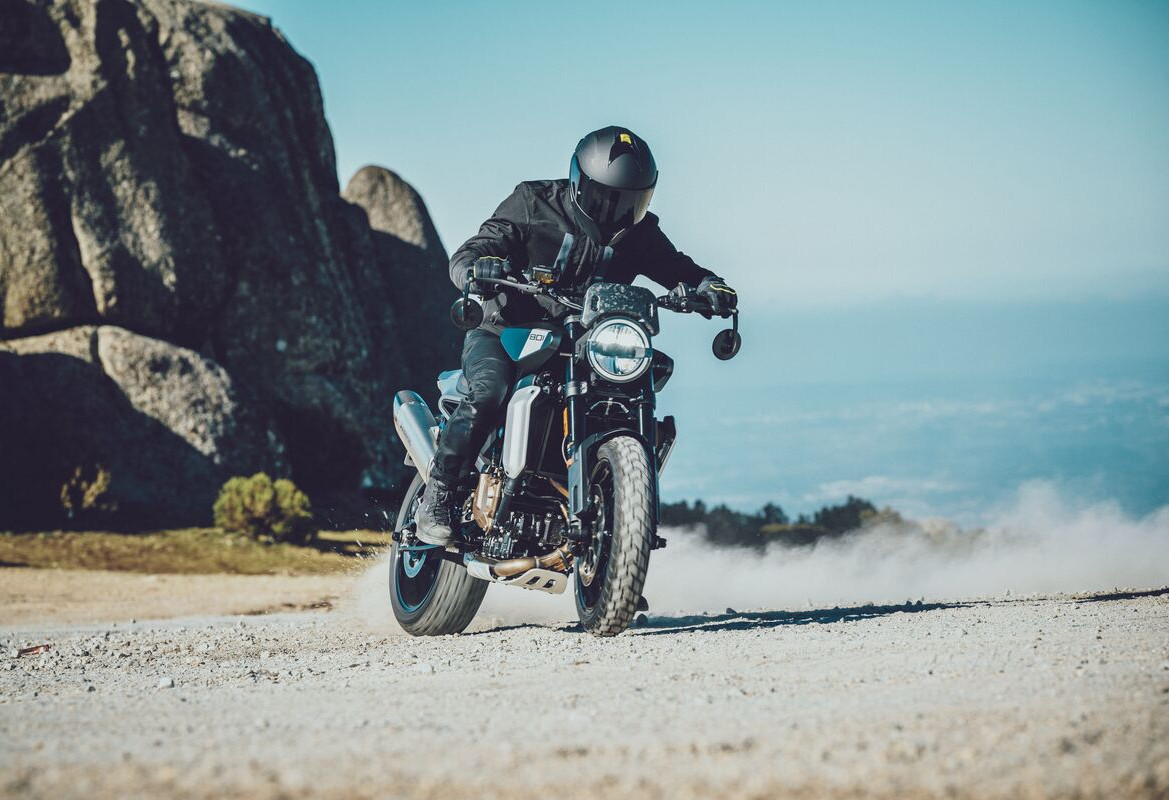
Aluminum swingarm
The signature gravity diecast, open lattice swingarm is manufactured from lightweight aluminum and has been specifically engineered for stiffness and stability while offering excellent flex characteristics.
By linking the swingarm directly to the rear shock, complexity and parts are reduced to allow for easy maintenance while the length of the swingarm aids in traction, stability, and suspension setup.
- Lightweight and strong for advanced handling and comfort
Front suspension
The WP APEX 43 mm upside-down open cartridge forks of the Svartpilen 801 offer 140 mm of travel and deliver advanced performance and comfort in varying street environments. Using a split damping function, compression and rebound can be adjusted easily using the easy-access 5-step clickers located on top of the fork tube. This allows the rider to personalize the ride characteristics for various styles and conditions.
- WP APEX 43 mm upside-down forks → advanced performance and comfort
- 140 mm suspension travel → perfect combination of street capability and comfort
- Easy access clicker dials → easy damping changes
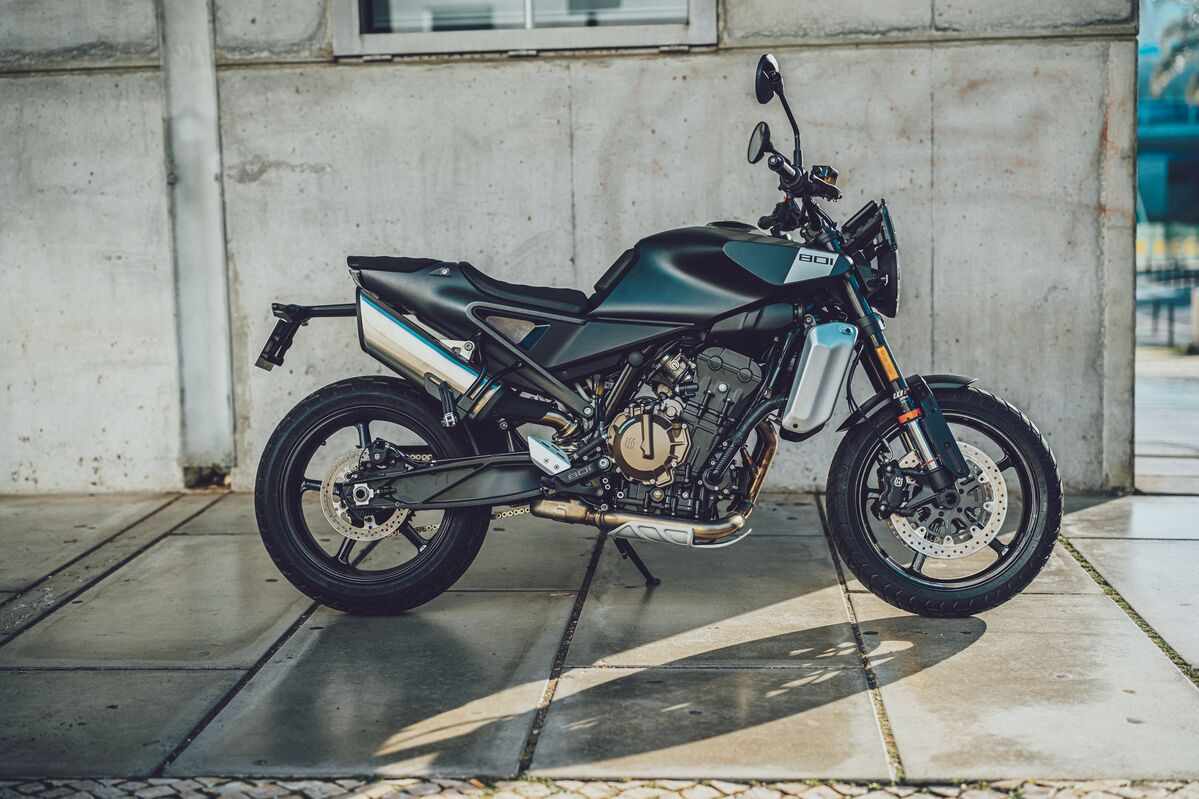
Rear suspension
The Svartpilen 801 is fitted with a WP APEX shock absorber, providing 150 mm of suspension travel for dynamic street riding and all-day comfort. The damping behavior can be adjusted with a rebound damping adjuster and an additional tool adjuster for the spring preload. While the rebound damping adjustability allows the rider to adapt the shock behavior to different riding situations, the adjustment of the spring preload allows the rider to adapt to different loads of the bike such as luggage or passenger.
- WP APEX monoshock → adjustable for rebound damping and preload
- 150 mm rear wheel travel
Aluminum triple clamps and handlebar
The forged aluminum triple clamps are a mark of the premium quality standard on the Svartpilen 801. Crafted from lightweight aluminum, the triple clamps are designed with a specific rigidity to ensure high levels of strength and tracking stability while also delivering superior chassis feedback and comfort to the rider. Additionally, the steering stem is made of high-strength aluminum instead of steel to provide excellent reliability with minimal weight.
An aluminum tapered handlebar allows maximum control with a comfortable riding position while an additional steel crossbar hints at its offroad heritage. Reversible handlebar mounts provide two handlebar mounting positions with an adjustment range of 7 mm (front to rear) for customizable ergonomics.
- Precisely engineered flex → advanced stability and feedback
- Aluminum tapered handlebar → maximum control and comfort
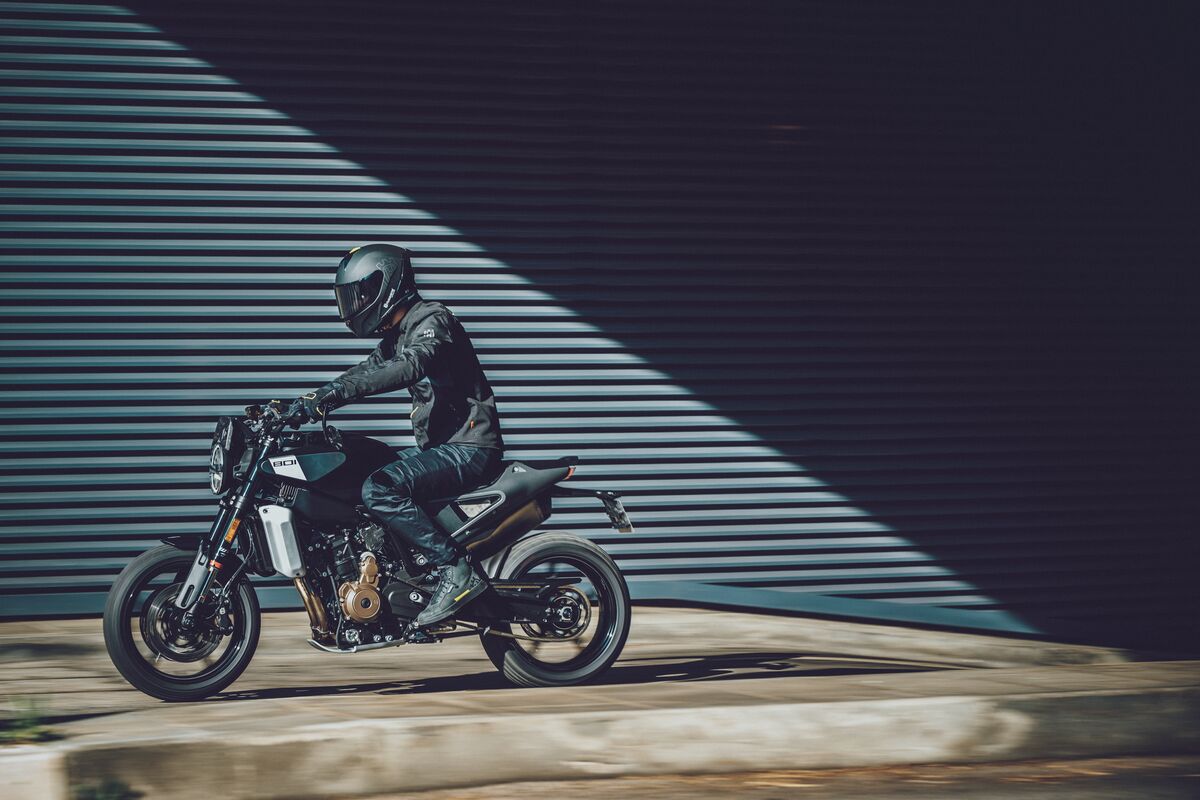
Steering damper
A WP steering damper is fitted as standard for confidence and control on rugged streets. The steering damper has been set up to feel as natural as possible, giving the rider a secure feeling while keeping the agile riding character of the machine.
Footrests
The cast aluminum footrests were developed to provide superior ergonomics, engineered with rubber inserts for day-long riding to provide exceptional comfort during extended periods of time. Their design also makes reverse (race) gear shifting possible without additional parts.
Bodywork
The Svartpilen 801 features a scrambler-inspired design, stripped to the essentials for a unique and authentic style. Tightly wrapped around the engine and frame, the bodywork is ergonomically designed to connect the rider’s body to the Svartpilen 801 for a perfect fit and confident control in all riding situations.
Integrated into the bodywork is a key design feature, “the split”, which comprises a division between the frame and subframe. This unique attention to detail, as well as striking colors and graphics, further showcases the progressive design direction of Husqvarna Motorcycles.
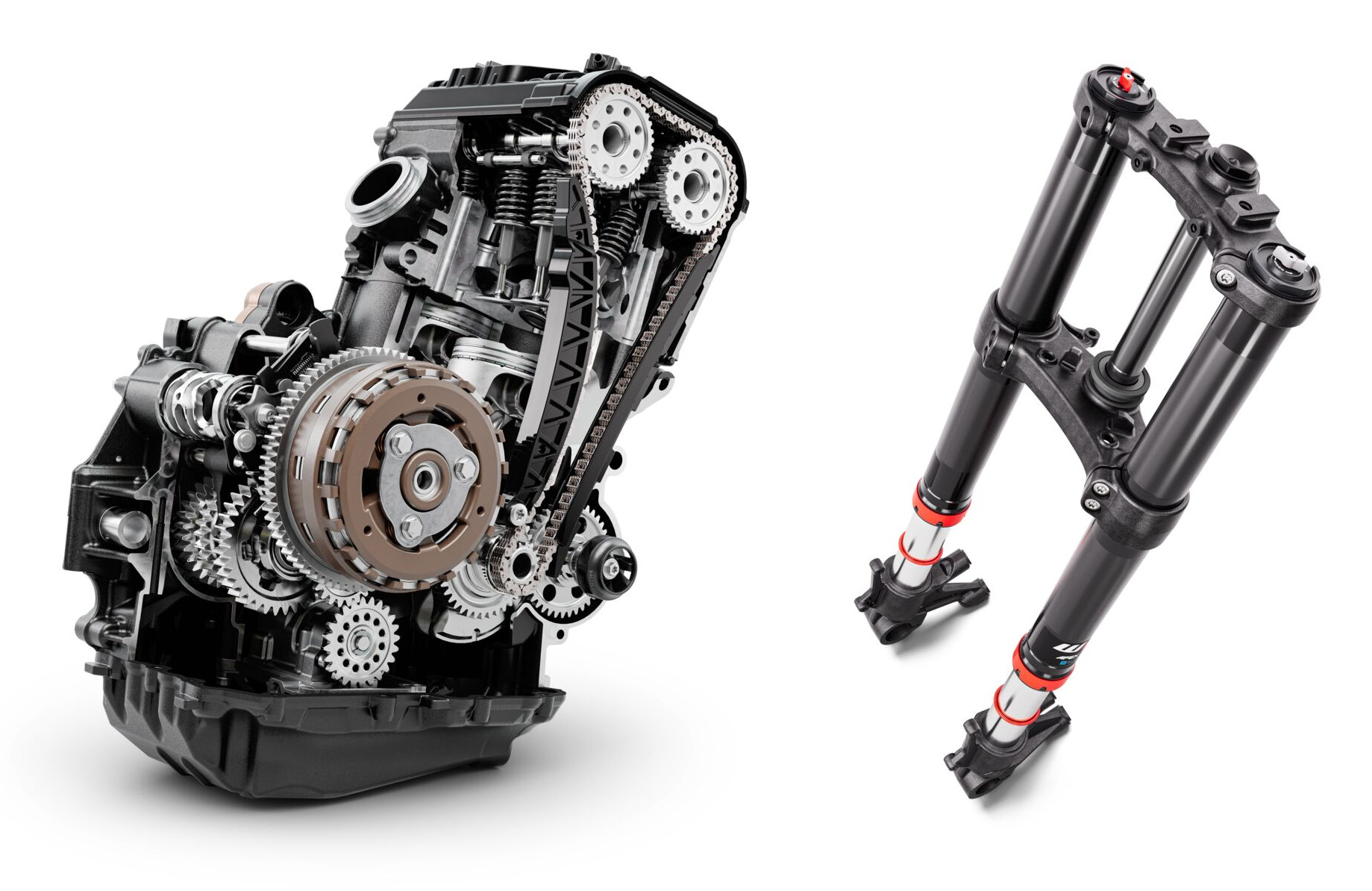
Nestled in the front end is a premium LED headlight to create an unmistakable profile. A light ring around the circumference of the headlight ensures the Svartpilen 801 is clearly visible in all conditions. Combined with the LED taillight and turn signals, this achieves a progressive, yet minimalistic look.
- Functional design → stripped back for a unique and authentic style
- Integrated LED headlight and taillight → modern and minimalistic look
- Striking colors and graphics → highlights a progressive design direction
- Slim bodywork → easy movement and exceptional ergonomics for all rider sizes
Seat
The two-piece seat combination offers advanced performance and comfort. Narrow in the front, it also provides easy ground access, with a specifically engineered seat foam firmness that ensures comfort for all-day riding.
The seat cover uses a mixture of high-quality materials that delivers superior durability, with padded and heat-stamped ribs providing additional comfort and improved traction in wet conditions.
Fuel tank
The streamlined 3.7-gal (14-litre) fuel tank is a central design element of the Svartpilen 801 and is housed inside a unique cover.
The fuel tank shape allows for a straighter seat, giving the rider more freedom to move between riding positions. It also helps lower the seat to aid overall accessibility. Added to the distinctive design of the fuel tank is a premium filler cap that includes a machined Husqvarna Motorcycles logo.
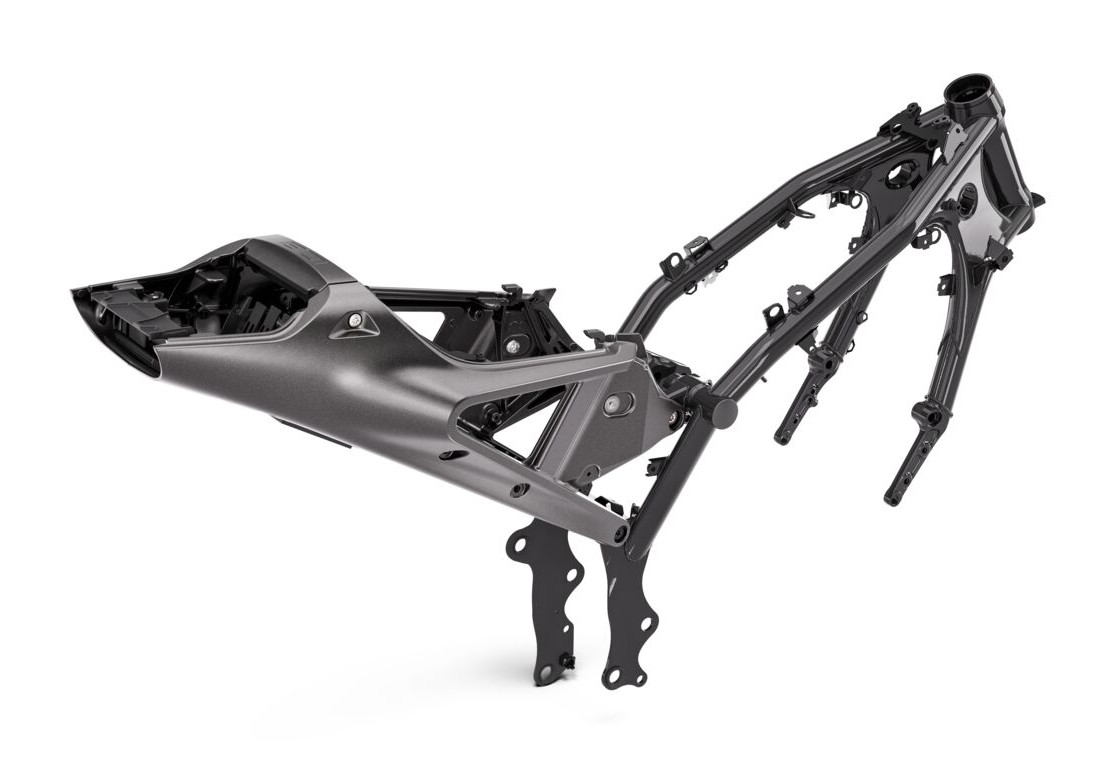
TFT dashboard
The Svartpilen 801 is equipped with a state-of-the-art 5” Thin-Film-Transistor (TFT) display. The full color display is easily readable with key information clearly arranged for the rider.
The optically-bonded mineral glass display ensures optimum scratch and glare resistance and automatically adapts to changes in environmental light. The display configuration, which includes a trip meter, fuel range and consumption, and water temperature, can be re-arranged for preference. All Ride Mode and ABS settings are immediately visible on the screen while a configurable blinking shift light indicates when to change gear.
Additionally, the integrated USB-C connector allows for easy charging of handheld devices mounted to the handlebar. With the Ride Husqvarna Motorcycles app installed on a smartphone, the device can be connected to the Svartpilen 801 through the standard Connectivity Unit for Turn-by-Turn navigation, as well as the ability to control telephone calls and music selection.
Wheels and tires
The lightweight 17” front and rear cast alloy wheels ensure high levels of strength and durability with minimal unsprung weight. The Husqvarna Motorcycles logo is laser-etched onto the wheel to highlight the attention to detail on the Svartpilen 801.
Fitted to the wheels are Pirelli MT60 RS tires with a 120/70-17 at the front and a 180/55-17 on the rear wheel. The tires offer advanced grip and durability in a wide range of conditions while also giving the Svartpilen 801 a rugged look.
- Lightweight but strong and reliable wheel construction → minimum unsprung weight
- Pirelli MT60 RS → advanced grip and durability in varying terrain
Brakes
The Svartpilen 801 features a state-of-the-art J.Juan brake system with the Spanish manufacturer’s components delivering exceptional performance and reliability. Black anodized brake calipers with a laser-etched Husqvarna Motorcycles logo highlight the progressive design and premium finish.
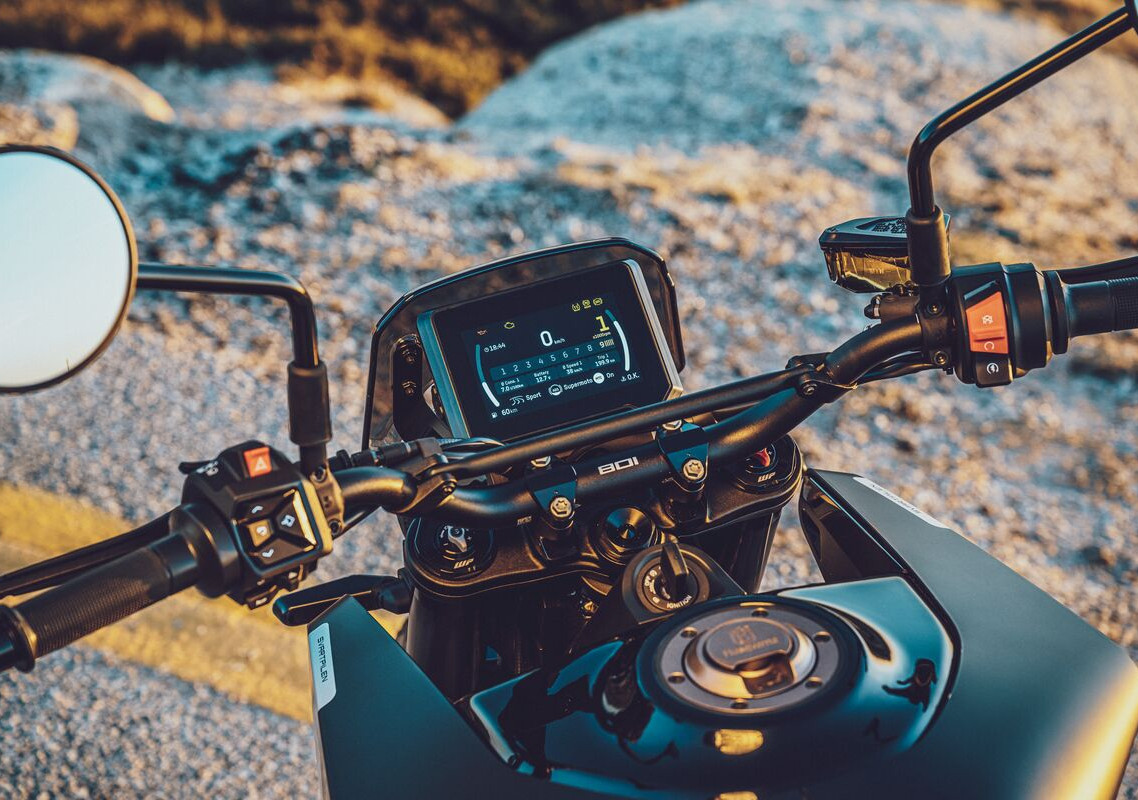
The four-piston, radially-mounted front brake calipers with two Ø 300 mm floating brake discs ensure maximum control and stopping power at all times. The strength of the master cylinder piston spring has been designed for exceptional feeling and feedback at the brake lever while “Slim-Seal” technology seals the caliper piston effectively to provide a precise and consistent pressure point.
The rear brake features a Ø 240 mm brake disc actuated by a two-piston floating caliper. The isolated pistons in the caliper, in conjunction with isolation plates between the brake pads and pistons, provide exceptional heat stability for prolonged braking, especially when riding down hills. Additionally, the stainless steel fitting on the rear caliper brake hose helps reduce temperature.
The standard Bosch ABS system prevents wheel lock up under hard braking and can be deactivated on the rear wheel for more advanced riders.
- J.Juan braking system → advanced braking performance and reliability
- Bosch ABS → prevents wheel lock up under hard braking
Exhaust
The stainless-steel exhaust system meets current emissions regulations while allowing the engine to breathe freely. Concealed within the framework, the exhaust system features a pre-muffler before the silencer. The pre-muffler aids in centralizing mass by allowing for a smaller, lighter silencer.
- Two-part stainless-steel exhaust → centralizes mass and offers advanced durability without added weight
Engine
Engine
The 799 cc, DOHC, liquid-cooled, parallel-twin cylinder engine features the latest design and electronic technology. The maximum power output and torque are outstanding and highlight the performance of the state-of-the-art engine.
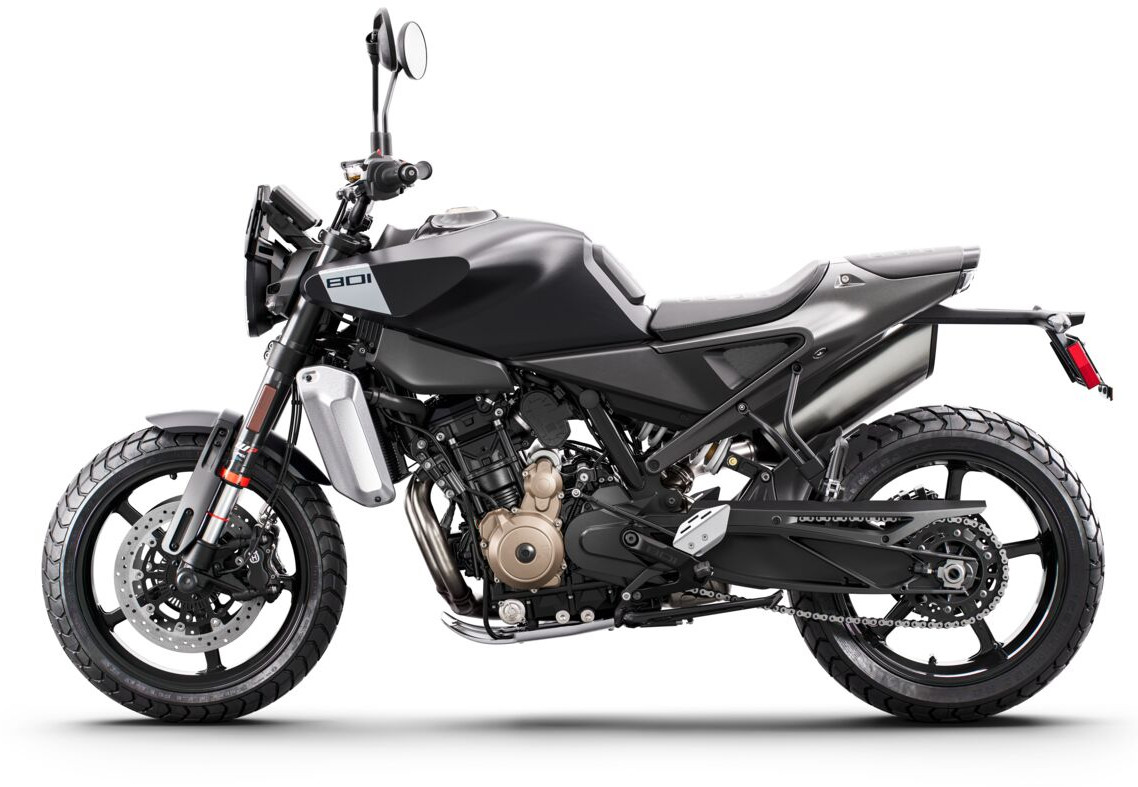
The lightweight engine weighs only 114.6 lb (52 kg) without oil, including all components such as the electric start, throttle body, clutch, and coolant lines. Reliability, durability, and efficiency are guaranteed by technical solutions such as active crankcase evacuation and a semi dry-sump lubrication, which reduces oil friction and pump losses. Overall, the engine design extends service intervals to 15,000 km and ensures an extremely low fuel consumption.
- Exceptional performance → weighs only 114.6 lb (52 kg)
- Long service intervals and low fuel consumption → low cost of ownership
- Cutting edge ride-by-wire electronics → class-leading twin-cylinder technology and performance
Cylinder head
Smooth power delivery is guaranteed thanks to the state-of-the-art four-valve, twin-cylinder, chain-driven camshafts and single spark ignition. The camshafts are assembled, making them lighter than forged camshafts, and the cam profile has been developed to create an especially torquey engine. The 36 mm steel intake and 29 mm exhaust valves with oval steel springs are actuated via Diamond-Like Carbon-coated (DLC) finger followers for minimal friction while delivering exact valve timing at higher engine speeds. The cam chain is tensioned by a hydraulic chain tensioner that provides outstanding reliability.
In addition, the intake ports have been Computational Fluid Dynamics (CFD) flow-optimized for maximum air flow and performance.
- Double overhead camshaft → compact cylinder head design, low friction, lightweight and cost efficient
- Flow optimized intake ports → maximum airflow for high performance and smooth engine behavior
Crankcase
The horizontally split crankcases allow a large engine bore. Made from high-pressure cast aluminum, they allow for reduced wall thickness for weight optimization.
The nikasil-coated aluminum cylinders are an integral part of the sleeveless engine casing. The open deck cylinder construction allows for optimal cooling and reduced production tolerances.
Crankshaft, conrod and piston
The crankshaft features a 65.7 mm stroke and runs on a plain bearing to ensure high reliability and long service intervals. The rotating mass of the crankshaft has been specifically calculated to improve engine behavior at part throttle and constant speed. In addition, it aids cornering stability without losing the agile riding feel.
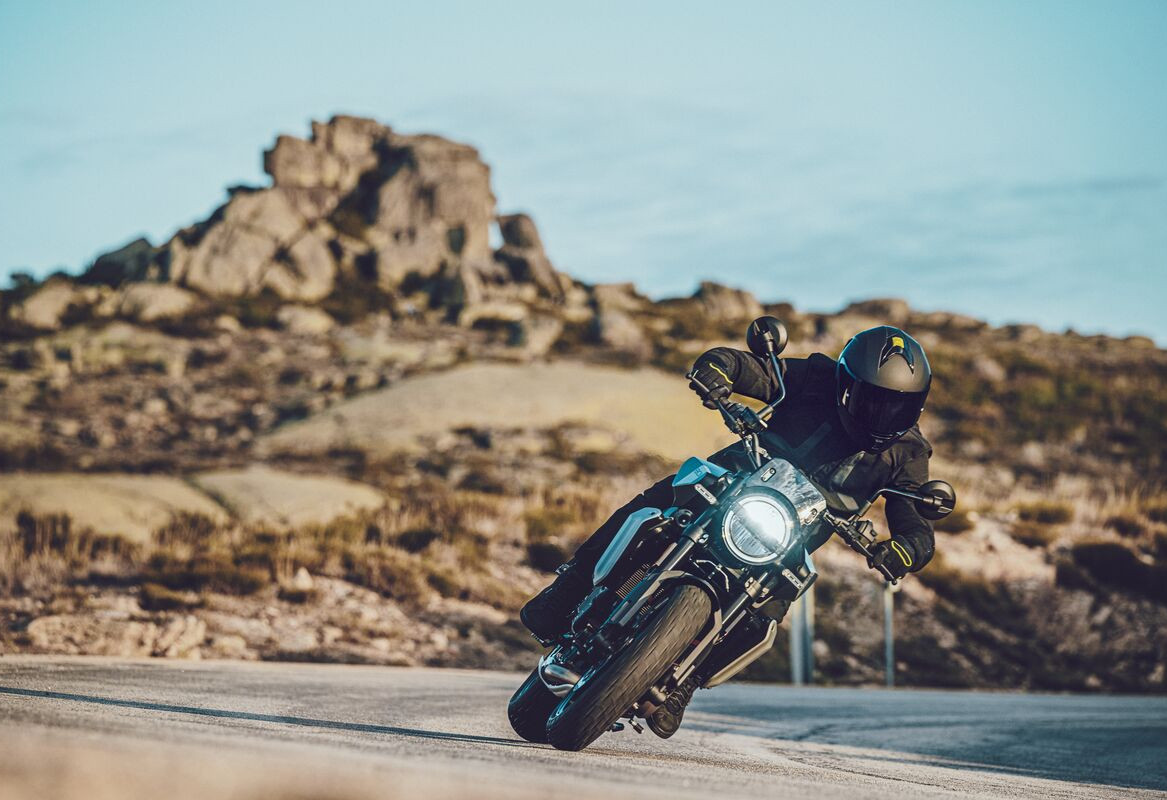
The plain bearing type connecting rod is connected to the 88.0 mm piston, where the trapezoidal top end (V-shape) reduces oscillating masses and is connected through a bronze top end connecting rod bearing.
The forged aluminum pistons feature a bridged box design with three piston rings. Due to the box construction, the piston weight is held to a minimum while providing advanced durability. Additionally, the engine features two oil jets per piston for optimal piston cooling. Together, this creates a high compression ratio of 12.5:1.
To increase comfort and reduce vibrations, the engine is fitted with two balancer shafts, one in front of the crankshaft and the other in the cylinder head between the two camshafts, reducing inertia forces for a smooth ride.
- Large bore and long stroke → 88.0 mm / 65.7 mm
- Forged aluminum bridged box pistons → high performance and durability with minimal weight
- Two counter balancer shafts and minimized oscillating masses→ lower vibrations
EMS / Ride-by-wire throttle
The powerful and torquey twin-cylinder engine is fitted with two 46 mm throttle bodies made by Dellorto that have no mechanical linkage to the throttle grip. As the rider twists the throttle open or closed, the throttle valve is electronically controlled by the Engine Management System (EMS) that continuously compares engine parameters with data from sensors, and adjusts the throttle valve accordingly, resulting in perfect power delivery and throttle response.
To eliminate interferences between the cylinders at small throttle openings, each cylinder features a separate intake tract while a sensor in each throttle body measures and regulates the manifold pressure.
Additionally, a knock sensor on the cylinder head is fitted to detect knocking combustions – an important feature for long distance travel. The engine electronics react to relevant vibration signals caused by knocking combustions by delaying ignition, and consequently protecting the engine from possible damage.
- Electronically controlled throttle → perfect power delivery and throttle response
- Active knocking control → protects the engine from possible damage due to poor fuel quality
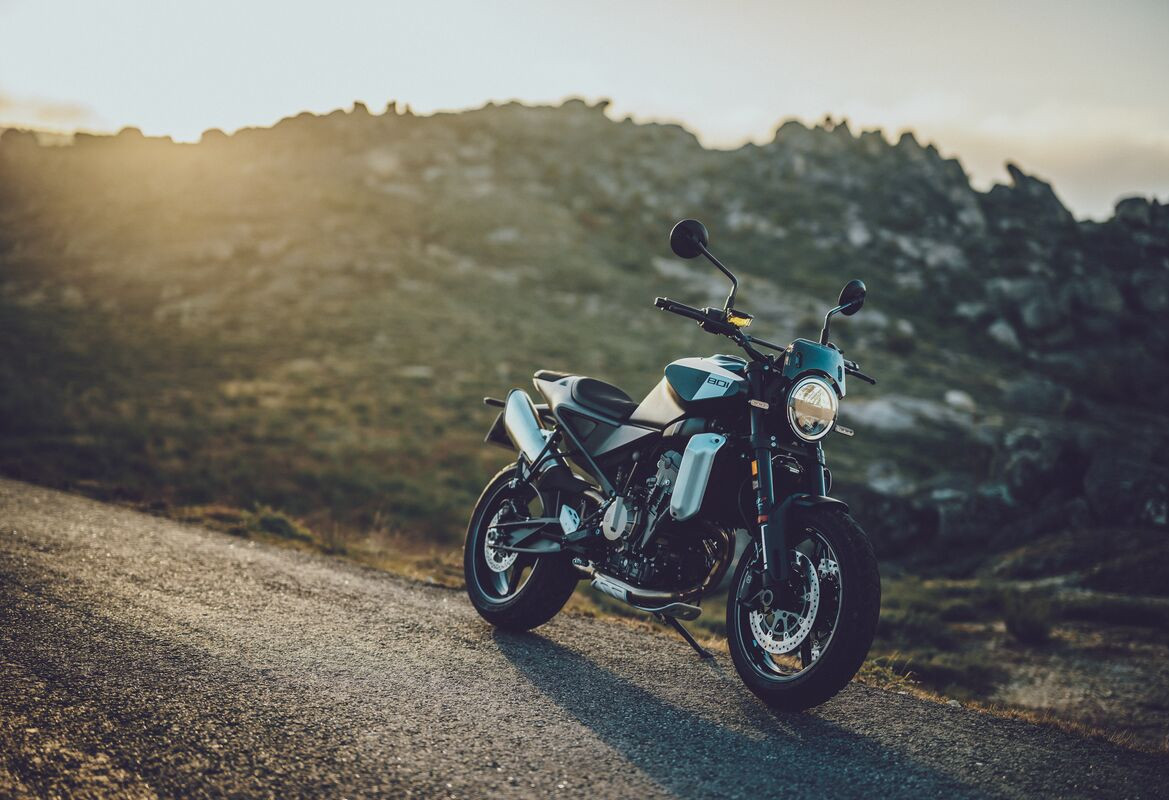
PASC slipper clutch
The Power Assist Slipper Clutch (PASC) system maximizes rear wheel grip under hard acceleration and prevents rear wheel instability and hopping when braking hard into a turn, in turn delivering maximum control and smooth down-shifting. The slipper clutch opens when the engine back-torque becomes too high, preventing destabilization from rear wheel chatter when braking sharply or decelerating. When the rider opens the throttle, it reduces the force required for changing gear and reduces lever vibration, aiding effortless gear changes during extended trips and changing conditions.
The precisely engineered friction plates provide a high friction value to increase durability and heat resistance while the friction discs guarantee sufficient oil separation for easy access to neutral.
- PASC slipper clutch → maximum control under hard acceleration, braking, and down-shifting
Gearbox
The engine features a 6-speed sequential gearbox that ensures quick and precise gear changing due to short shift lever travel, light spring action, and advanced settings of the standard Easy Shift feature.
For added confidence, the gearbox is linked to an Easy Shift sensor that allows the rider to make seamless up and down shifts without using the clutch. The sensor works by relaying the moment the rider actuates the gear lever to the Engine Control Unit (ECU), which in turn matches engine parameters to allow a simple gear change at any RPM or engine load.
Additionally, the glass bead-blasted teeth of the 4th, 5th, and 6th gears provide exceptional reliability.
Oil Circulation
The oil circulation is based on a semi-dry sump system to reduce friction losses and allow for a compact build. The compact engine provided engineers with more design freedom to place the engine in the chassis, resulting in a low center of gravity and reduced seat height.
In the state-of-the-art engine, the oil is actively pumped out of the crank case, clutch housing, and gearbox. The underpressure of 0.45 bar ensures that oil does not flow unnecessarily through the engine, reducing friction losses on the crankshaft. The oil sump is integrated into the oil pump housing, together with two pumps (one scavenge, one pressure) and a pressure regulation valve. Additionally, the engine is equipped with a large oil cooler for efficient oil temperature.
Electronics
Easy Shift
The Svartpilen 801 is equipped with a motorsport-derived Easy Shift function. Up and down shifts can be performed without the need to pull in the clutch lever, which provides several benefits:
- Shorter shift times
- A more precise and smoother ride, since clutch actuation and backing off the throttle are no longer required
- Load reversal impact on the rear wheel is noticeably reduced
- Rear wheel traction is improved
- The rider can keep full grip on the handlebars
Easy Shift uses two sensors. The first sensor is on the shift arm, which detects the movement on the shift lever rod when the rider upshifts, causing the EMS to cut the ignition instantaneously. As soon as the second sensor on the shift drum detects the gear engagement it reapplies the injection and opens the butterfly valve, ensuring fast and smooth action at all throttle openings and engine speeds. When downshifting, the system matches the engine speed to the speed of the lower gear.
Additionally, the Easy Shift system can be deactivated by the rider if desired.
Cornering ABS
The latest technology in braking systems is fitted to the Svartpilen 801. The Bosch cornering Anti-lock Braking System (ABS) is specifically setup for the motorcycle and allows riders to always use the full power of their brakes while taking the lean angle of the motorcycle into account for the highest level of control.
The system also features advanced rollover protection. In Street ABS mode under extremely hard braking, sensors prevent the Svartpilen 801 from handling erratically.
- Bosch 9.3 MP ABS → maximum braking performance
Supermoto ABS Mode
In this mode, ABS is deactivated on the rear wheel and reduced on the front wheel with data from the lean angle sensor no longer considered. This allows riders to have a better connection with the road and enjoy a heightened level of braking feel. It reduces the tendency of the ABS on the front wheel to regulate on loose surfaces, thus providing stopping power while offering secure braking. The settings have been optimized for the Svartpilen 801 to ensure maximum braking power and minimal slip.
Supermoto ABS is linked to the Sport ride mode and can be exclusively switched between Street and Supermoto in the optional Dynamic Mode.
Cornering MTC
Cornering Motorcycle Traction Control (MTC) is the premium lean angle-sensitive traction control system of Husqvarna Motorcycles and provides the highest level of control. The system monitors the rear wheel speed and reacts immediately if the rotational speed of the rear wheel is disproportionate to the riding situation. Within milliseconds, the MTC reduces the engine output with an extremely smooth, barely perceptible intervention of the throttle valves, until the system has reduced slippage to optimum proportions for the selected ride mode and current angle of lean, benefitting from the cutting-edge 6-axis Inertial Measurement Unit (IMU).
The Cornering MTC uses two additional sensors (a wheel slip and a tilt angle sensor) for the various movements of the motorcycle. Each sensor has its own function and data from both are combined to offer a range of traction control settings. With the data from the tilt angle sensor, smoother traction is ensured. The main MTC benefit is felt in straight line acceleration with the power reduction less abrupt when front wheel lift-up is detected. The result is a more constant and controlled acceleration.
For experienced riders, the MTC can also be switched off.
Slip adjuster
Depending on the selected riding mode, Cornering MTC allows different levels of traction slip at the rear wheel. In the optional Dynamic mode, the rider can control the level of MTC intervention with ten levels of slip adjustment. The setting offers a large range of intervention, covering beginners and pro riders alike. On the competitive side it allows for a drifting rear wheel when accelerating out of the corner and lifting the front wheel.
Riders can also set the slip adjuster to level 0 as MTC Off (long press downwards at level 1).
Ride modes
The ride modes allow the rider to adapt the behavior and feeling of the engine. A specific ride mode alters the throttle response, the traction control level and, depending on the mode, the peak power.
Street mode offers a smooth throttle response with matching MTC settings for riding on paved surfaces and a linked Street ABS mode. The MTC is set up to allow minimal slip before it activates. Street mode is smooth and accessible enough for less experienced riders and when traveling with a pillion, yet dynamic enough to ride along twisting mountains and valleys with confidence.
The Sport mode offers a lively and direct throttle response and allows considerable slip before it intervenes while the linked Supermoto ABS mode allows the rear wheel to lock. On low grip surfaces, a certain amount of wheel slip is needed to ensure forward motion. Additionally, it allows riders to break traction so that they can steer with the rear wheel. Sport mode is not lean angle sensitive and the MTC does not intervene when a rider uses a berm to turn. Furthermore, the anti-wheelie function is not engaged in Sport mode, which allows riders to lift the front wheel.
Rain mode has a very smooth throttle response, reduced peak power, and the traction control intervenes early for maximum control. Rain mode is ideal for bad weather, challenging road conditions, preserving tires, or just riding home at the end of a long journey.
Ultimately, the optional Dynamic mode provides direct control over the various functions and reconfigures the displayed information on the dashboard. The feature can be purchased and activated as a software addon through authorized Husqvarna Motorcycles dealerships.
Anti-Wheelie Mode (optional)
The Svartpilen 801 features an Anti-Wheelie Mode that can be set to five separate levels from Very Low to Very High, allowing a specific maximum degree of wheelie. It can also be switched off completely.
Motor Slip Regulation (Optional)
The Svartpilen 801 can be equipped with Motor Slip Regulation (MSR), an engine brake control that works in the opposite direction of the MTC. If the engine drag torque is too high, due to down shifting or after closing the throttle abruptly, the ride-by-wire system balances the throttle exactly to as much needed to ensure a controlled deceleration. MSR complements the slipper clutch and is especially effective in low grip situations.
Cruise Control (Optional)
The Svartpilen 801 can be fitted with a handlebar menu switch with additional Cruise Control buttons. This means the desired speed can be easily set by the rider on long journeys.
Hazard warning system
The hazard warning system allows for the simultaneous activation of the LED turn signals in case of a road hazard or emergency. The system is activated with an integrated switch on the throttle switch cube.
Connectivity features
The Svartpilen 801 is the latest Husqvarna Motorcycles street model to be compatible with the Ride Husqvarna Motorcycle app (available for Android and iOS). The integrated connectivity unit enables phone and music functions, as well as turn-by-turn navigation and route planning, powered by the dedicated app.
The music function on Ride Husqvarna Motorcycles allows playback control while riding. Using the left handlebar-mounted switch, the rider can toggle between tracks and control the volume, with track information displayed on the TFT dashboard.
With the ease of pairing a smartphone to the motorcycle with Ride Husqvarna Motorcycles, the phone function allows the rider to see the identification of incoming calls on the TFT dashboard and, using the mode switch, accept or decline the call. The call-out feature allows the rider to define a list of favorites, and to select and call the last numbers stored on the connected device.
Additionally, Ride Husqvarna Motorcycles provides route planning and Turn-by-Turn+ navigation. The visual guidance is transmitted via Bluetooth to the TFT dashboard to show the pre-planned destination. To save on mobile data use, maps can be downloaded for offline use; this also helps to create and save pre-planned routes and to allow for extended exploration. Up to 128 waypoints can be added to a route when planning, helping to create truly unique trips.
Additional features include:
Last Search is filled with the 10 last searched destinations.
Favorites is filled with 10 saved destinations and routes. Favorites are saved and named by the customer in the app.
Stop Navigation shows stops/exits on current route guidance.
Skip Waypoint skips the current waypoint and re-calculates the route to the next waypoint.
Navigation Volume allows the rider to change the system volume.






Great bike. Just like my 890 would need new camshafts and followers at best every 20-25 k miles. Worst case – also new heads. Otherwise just great bike.
So this is just a Duke 790 with electronics from new the new Duke 990 lol what’s the point of this except that it has a bit different look?
…or a CFMoto 800NK depending on one’s understanding or opinions on how products are. I think the different look is the point.
Not super sexy, but still a large improvement over KTM styling. Would look better with a better paint job.
Would still prefer the red/white Moab/Baja concept from a few years back.
a much better KLR650 with cruise control!
In what delusional world does this look, feel, or serve like a KLR?!
Repeating Thad Stelly’s inquiry: Where are these are manufactured?
Repeating my answer to his question – almost certainly manufactured by CFMoto in China.
Like the Buell cruiser the level of engine performance is probably more than okay, but also like the Buell the visuals are distracting or even convulsing. Like it’s smaller displacement brethren, this also fell out of the ugly tree and hit every branch on the way down.
Time travel back about a thousand years with this bike…you could rent the seat to the Inquisition folks.
I have zero respect for a product using another companies major component, rebranded as its own. Sorta like Bentley using a couple VW narrow VR6s as a W12.
You have never heard of brand engineering? Buy any GM products ever? This isn’t a different company like back in the day when small bike companies all used Villiers engines.
I still kick myself for not buying a 701 when the local dealers were bombing them out after they were discontinued. Had I known that everything was going to throttle by wire I would have bought one for sure.
I despise throttle by wire and no. The MotoGP guys having to use it doesn’t change my opinion at all. Those poor sods have to ride ever more ridiculous bikes every day. I pity them. Stoner bailed for a reason.
Really? The Svart 701 25+lb heavier than the Duke 690 that it’s made out of, which you also didn’t/wouldn’t buy. What about the current 690/701s that are enduro format street bikes with the same engine and even lighter weight? The bikes you say you want are and have been available.
Stoner bailed because he had and continues to have mental health challenges too great to allow him to do the sport. Literally nobody else good enough to keep their seat from his generation ended their MotoGP careers early/healthy. Because of the format Dorna has in place the demand for MotoGP seats is only getting greater.
Have we ever heard a reasoned explanation of why Mick thinks electronic throttles are so evil? Cable throttle responses are governed by the geometry selected by the makers, such as the radius of the twistgrip drum and the leverage at the throttle body end. I’ve altered both on bikes of mine to achieve a satisfactory throttle response. Conversely, my Ducati Hyperstrada has throttle-by-electronics and I can tailor the response to suit me just by pressing buttons. What’s not to like? Is the problem simply that Mick doesn’t trust electronics? There’s plenty of them on a modern bike!
I wonder how many decades passed before he was okay with hydraulic disc brakes, the wet clutch, or self-cancelling turn signals….or is he?
Throttle by wire is where I draw the line. It is a point at which the bike has too much electronics. I will not cross that line.
I didn’t do any purchase research on the Svartpilen. If I had I would have rejected it for some of the reasons Dave outlined. How they packed 25 pounds of fat on that thing is beyond me. What foolishness. It’s nice to know that I didn’t miss out on anything by not buying one.
I guess that puts me out of the current street bike market completely. The only thing that got on my radar at all was the Ducati single. But that thing has more electronics than the average Best Buy store. Spare me.
Maybe I’m lucky. But the fuel injected street bikes that I have bought since 1994 have had decent throttle response. I have wrestled with fueling on the 1100 Hypermotard, mostly fixed. I am swapping the DP “race” kit from the 2004 Multistrada to the 2008 that I recently bought to replace it. I was surprised to find that they use the same kit. The kit gives the engine more bark. It rips away from stops two up with much more authority. The 650 has a 41mm FCR flat slide that replaced the questionable stock round slide. It actually has an entirely different intake system with no stock parts. Key is that it has a much longer intake runner the really enhances midrange power.
Luddite.
I can’t understand how any motorcyclist tolerates a throttle that takes several seconds to open. Whack any of my throttles wide open and you get wide open. Right now daddy.
If that makes me a Luddite. Well then, guilty as charged.
WTF throttle by wire takes “several seconds to open” – EVER, let alone now?
JEEZ, Luddite is farging correct.
Well I mean we knew that already with all the 2-stroke BS but JEEZ.
Yeah right. I’m a Luddite because I think an engine with a whole lot of needless extra moving parts that needs a huge displacement advantage to race competitively is Flintstone. That’s rich. Some salesman really worked you over.
And the throttle bit. Just what do you think all those ride modes actually do? They are now to the point where you have to pay extra to get a throttle map that best emulates a real throttle cable.
Spare me your tractor engines with electronic nannies to coddle you. Heavy and complex are are two sure signs of failed engineering. What’s next for you throughly modern future dwellers? Steam power and cloud throttle?
I guess we all have our own experiences. I’ve ridden a number of modern KTMs (from 150cc two strokes to several 1290s) and they all have the best throttle response of any motorcycles I can remember, and it’s often adjustable in comprehensible increments. Smooth? Yeah, surprisingly so, but boring, not at all! These are supremely responsive machines. Perhaps one day I’ll be adequately discerning to appreciate the many faults of modern machines. Until then, I’ll simply be having a blast every time I ride. Cheers!
“Cable throttle responses are governed by the geometry selected by the makers”
And are hence instantaneous, and provide a direct link between wrist movement and throttle opening. Cable stretch, friction and analog resonances being the only; entirely analog; modifiers.
Whereas with RBW, the translation function is infinitely more complex; taking all manners of external sensor inputs and stored maps into consideration. Especially so, with KTM, who seems to embrace the “possibilities” all this autonomous control offers, rather than shun its lack of directness.
Objectively, the electronic dorking around does make things smoother. And hence ultimately faster. But unless you’re a paid racer, who cares? It also makes the bikes’ responses dull as heck. There’s no life in the twistgrip. No matter how clumsy you are, the bike simply carts you around smoothly. Coming back to any well tuned analog throttle bike, is such a breath of fresh air, after spending time with these dullified throttles. The 636, and ZX14, are almost unbelievably engaging, compared to pretty much all RBW bikes. And KTMs are probably the worst of them. Specifically because they are ones who take the freedom provided by RBW the furthest.
But yes, tuning and breathing work to make analog throttles smooth enough, is capital E expensive and precision labor intensive. Much, much cheaper and simpler to take a rather shoddily and imprecisely slapped together engine and “tame” it with a few sensors and some invasive throttle maps. Even more so these days, faced with ever tighter emission and safety requirements, enacted based heavily on inputs from Bosch and other electronics providers.
Pretty sure it would be rather easy to convert a RBW throttle body to cable.
The resulting engine would almost invariably be near unrideable.
Maybe, just maybe, Suzuki still bothers enough to ensure the engines are still breathing and fueling smoothly. But chances are even they’re cutting costs instead, and just smoothing out underlying roughness with aggressive use of sensors, throttle maps and averaging over lots of cycles.
It’s really hard, and requires lots of very precise work, to tune a high strung, low inertia, purely mechanical engine and throttle to be smooth. Much simpler and cheaper to just leave the mechanicals rough and unfinished, and artificially smooth it electronically.
Pretty good looking bike that should tug some heartstrings from folks’ distant past. Though I think a more classically rounded gas tank would look better.
I think Scramblers (along with smaller Adv bikes, probably sportbike as well) may be the “next thing”- as boomers continue to age out of big Adv bikes and “mid-sized” near 500 pound Adv bikes and into 400-450 pound “lightweights”. What’s impressive about this is that they didn’t cheap out on the electronics (smart move), even if they did a little on the suspension (many Americans need preload settings lol).
BTW, I recently joined the trickle down migration- I bought an 890 Adv to most likely replace my 1190 Adv.
On the other hand, I’m fairly disappointed by the continuous displacement and weight creep of “small”, “light”, “middleweight” bikes. I still feel that 500-750 is middleweight and anything bigger/more powerful is “literbike class”.
The most beautiful part of owning this bike is when you ride it there will be very few vehicle on the road, then none, so you get to ride anyway you wish.
Very interested in seeing it in person. Would love to get to test ride it.
I like it. It looks like a basic but fun motorcycle. Some good points in the conversation about paint and colors.
Where are these being manufactured?
No mention if it is made in China or if production stays in Austria as with previous Husqvarna models.
I’m guessing that they don’t want us to start asking as in better left unspoken.
I’ve read that the Austrian made 790 was pretty flawed from a reliability standpoint. The recently re-released Duke 790 is made at CFMoto in China. Chinese production will likely fix the reliability problems, assuming KTM still has control over material quality.
They forgot the clear coat again.
REALLY striking colours, not! I prefer the styling of the single-cylinder ones. The more marketing-speak, the less substance?
My thoughts exactly re the marketing speak. It took me about 20 seconds to scroll to the bottom of the press release without reading it. Just another in a long – and getting longer – line of parallel twins. We used to make fun of UJMs, how about UPTs?
Yes, the single cylinder Svartpilen & Vitpilen 701’s are pretty special bikes since 2018 now being further validated by Ducati’s big single offering albeit in a supermotard version for starters.
But I’d still pick this Svart 801 over say a FZ 07.
I think this Svart’s natural competitor in Yamaha’s line is probably closer to the MT09 based on price, power/performance & tech features.
As far as performance is concerned, the 690/701 engined bikes are also in the 800-900 class of bikes – actually outperforming many/most bikes that are there, especially on handling.
Definitely handling but the 690 engine is ~70hp, comparable to the japanese twins of the same displacement. Most of the 800+ class multis are 100hp plus.
While the 690/701 performance is great, they’re just not perceived as having the same value as multi cylinder bikes of similar and even higher cost. Unfortunately they’ve been discontinued in favor of the 790’s, presumably for this reason.
Ah, a spec sheet guy. They are actually 72-74 hp and easily increased. The fact that the Duke 690 is between 100 and 200 pounds lighter than other bikes it is competing against pulls a lot of, er, weight. The lower gearing also helps. I know for instance that the 690 can out-accelerate a Yamaha 900, a Ducati 900, a Triumph 900, a Kawasaki 900, KTM 790,a BMW 1200 and a Triumph 1200. I’m sure there are others but I’m running out of friends to compete against.